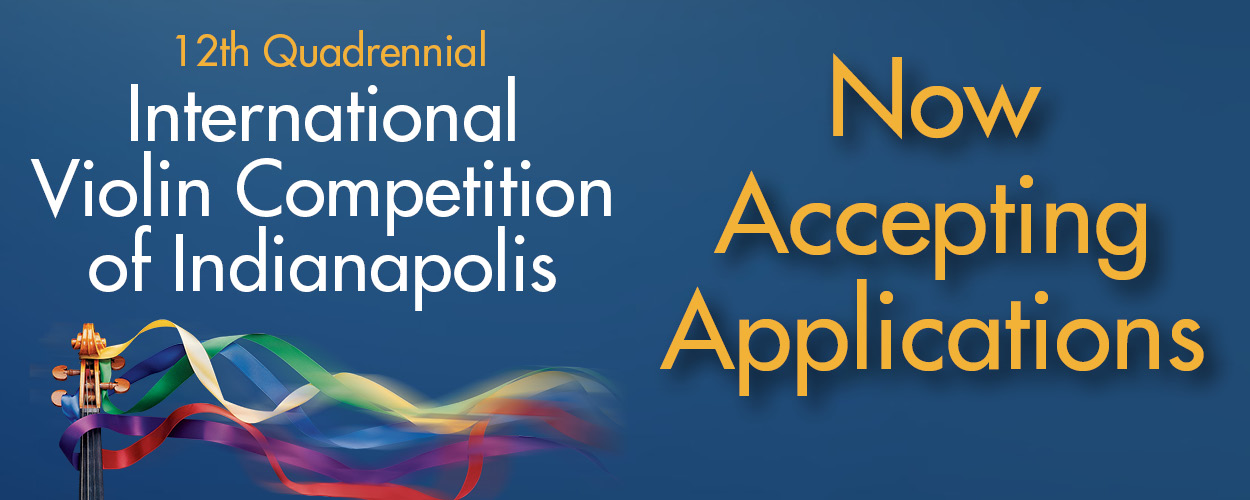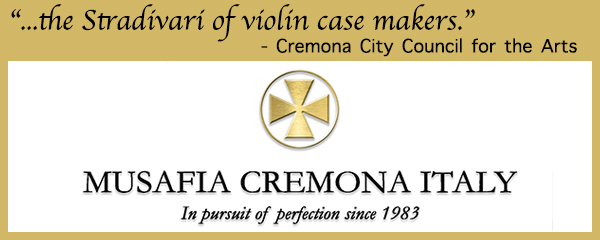REVIEW: 2022 Indianapolis Competition Classical Finals Day 1: Joshua Brown, Julian Rhee, Minami Yoshida
INDIANAPOLIS - "I'm not a musician, but I get a really different feeling from each of these violinists," said an audience member sitting behind me Wednesday night at the first Classical Finals concert for the International Violin Competition of Indianapolis. The concert, which took place at Butler University's Schrott Center for the Arts, featured three of the competition's six finalists: Joshua Brown and Julian Rhee, both of the U.S., and Minami Yoshida of Japan. They all played Mozart's Concerto No. 5 in A major, as well as a Kreisler piece.
"It's amazing how three people can make the same piece sound so different," continued the audience member, "I'm actually glad they were all playing the same thing."
How affirming, to find a hall full of thoughtful and engaged audience members such as this one - and furthermore, her observation was right on target. While a program featuring the same Mozart concerto three times in a row might seem potentially tedious, the evening's concert felt well-rounded and satisfying, with each of these incredibly talented violinist bringing his or her own artistry and personality to their performances.
All of the violinists performed with the conductor-less East Coast Chamber Orchestra, a lively and engaging group whose members play while standing up (all but the cellos!) Among the faces in the orchestra was violinist Nick Kendall, of Time for Three. Each soloist had show another aspect of their skills by taking on the task of leading the orchestra.
The first performer was Joshua Brown, a 22-year-old violinist who studies at the New England Conservatory with Donald Weilerstein and whose accolades include First Prize and Audience Award at the 2019 International Violin Competition of Leopold Mozart.
Mozart's fifth violin concerto begins with a busy and fairly long orchestral introduction, followed by an arresting soloist entrance, an Adagio that slowly traces an A major chord as if to simply showcase the beauty in a violin's voice. Playing on a 1679 Pietro Guarneri on loan from the Stradivari Society, Brown immediately impressed with a beautiful and sweet tone as he played that Adagio, then he played a little cadenza to lead into the "Allegro aperto" that follows.
Throughout the entire concerto, Brown played his own cadenzas, which were inventive and went to interesting harmonic places. Since cadenzas originally were meant to be improvisations by the artist at various cadences, a number of competitions actually require performers to write and perform their own cadenzas for Mozart concertos. However, The Indianapolis does not make this requirement. Brown was the only violinist of the evening who chose to reveal that additional skill, playing his own cadenzas.
After showcasing all that beauty of sound, Brown brought energy and verve to the third movement, known for the "Turkish" theme that intervenes in the middle, with noisy "collegno" in the orchestra (striking with the wooden side of the bows) mixing with some well-chosen open-string sound Brown's part. The ideas in the third-movement cadenza were tidy, as was the well-coordinated ending of the piece.
For his piece by Fritz Kreisler, Brown chose "Liebesfreud" - or "Love's Joy." And indeed it felt joyful, with Brown smiling as he played this buoyant piece from the turn of the 20th century. Brown brought out the piece's old-world style and elegant slides, leading the orchestra with energy. The ending of the piece was a well-planned treat, a little pause and acceleration that really worked.
Next was violinist Julian Rhee, 22, who studies with Miriam Fried at the New England Conservatory and was first prize winner of the 2020 Elmar Oliveira International Violin Competition.
Rhee began the performance with his back turned to the audience, as a conductor would, directing the orchestra by playing along with the tutti, or the orchestra part. When it came time for that beautiful soloist entry, he turned back around, also appending a little cadenza before launching into the Allegro aperto.
Rhee played the cadenzas written by the famous 19th-century violinist Joseph Joachim - well-crafted cadenzas that have stood the test of time and thus are very commonly played. Rhee executed them very well.
Rhee created nice long lines in the second movement, and the "Tempo di Minuetto" in the third movement was well-articulated with beautifiul trills. Rhee kept on the front side of the beat in the fast "Allegro" portion of the movement.
For his Kreisler piece, Rhee chose "La Gitana," or "The Gypsy." By the way, the pieces by Kreisler originally were written for violin and piano. For these performances, the orchestra parts were arranged by Jaakko Kuuisisto - a 1994 laureate of The Indianapolis who died earlier this year at the age of 48.
The arrangement for "La Gitana" seemed especially creative, with ricochet bowing and other fun tricks and interplay between the orchestra and soloist. Rhee played the piece with a nice, wide vibrato that brought to mind that old-world Kreisler sound.
Like Rhee, Minami Yoshida played the "tutti" beginning of Mozart's Concerto No. 5 along with the orchestra, but unlike Rhee she faced the audience rather than the orchestra.
Yoshida also studies at the New England Conservatory with Miriam Fried, and she has earned prizes at the 2016 Montréal International Musical Competition and the 2021 Joseph Joachem International Competition.
In the Mozart concerto, Yoshida had a way of dramatizing changes of mood and texture - almost underlining these things to make them clear to the audience. In the second movement, she began by playing a very straightforward and unadorned version of the melody, which then evolved throughout the movement. She seemed aware of an overarching structure the built both in volume and complexity, and she was able to fit in like a chamber player while still leading.
Yoshida also played the popular cadenzas by Joachim, with a kind of spontaneous sense of rhythm that might convince someone less familiar with them that she was improvising. In the third movement she led clearly with large gestures with her bow, looking to various sections as their parts interplayed with hers.
Yoshida also played Kreisler's "La Gitana," with an excellent sense of timing and gesture. She played with a great deal of rubato and changes in tempo, but she made these changes so clear, the orchestra followed her easily.
All three of these performances currently are available to watch for free - Click here to watch.
The Classical Finals will continue tonight with a concert featuring performances by finalists Claire Wells, SooBeen Lee and Sirena Huang. Click here to watch the free livestream, which begins at 8 p.m. ET.
You might also like:
- The 2022 International Violin Competition of Indianapolis Begins
- Finalists announced in 2022 International Violin Competition of Indianapolis
- Our Complete Coverage of the International Violin Competition of Indianapolis, past and present
* * *
Enjoying Violinist.com? Click here to sign up for our free, bi-weekly email newsletter. And if you've already signed up, please invite your friends! Thank you.
Tweet
Replies
This article has been archived and is no longer accepting comments.
Violinist.com is made possible by...
International Violin Competition of Indianapolis
Dimitri Musafia, Master Maker of Violin and Viola Cases
Johnson String Instrument/Carriage House Violins
Subscribe
Laurie's Books
Discover the best of Violinist.com in these collections of editor Laurie Niles' exclusive interviews.

Violinist.com Interviews Volume 1, with introduction by Hilary Hahn

Violinist.com Interviews Volume 2, with introduction by Rachel Barton Pine










